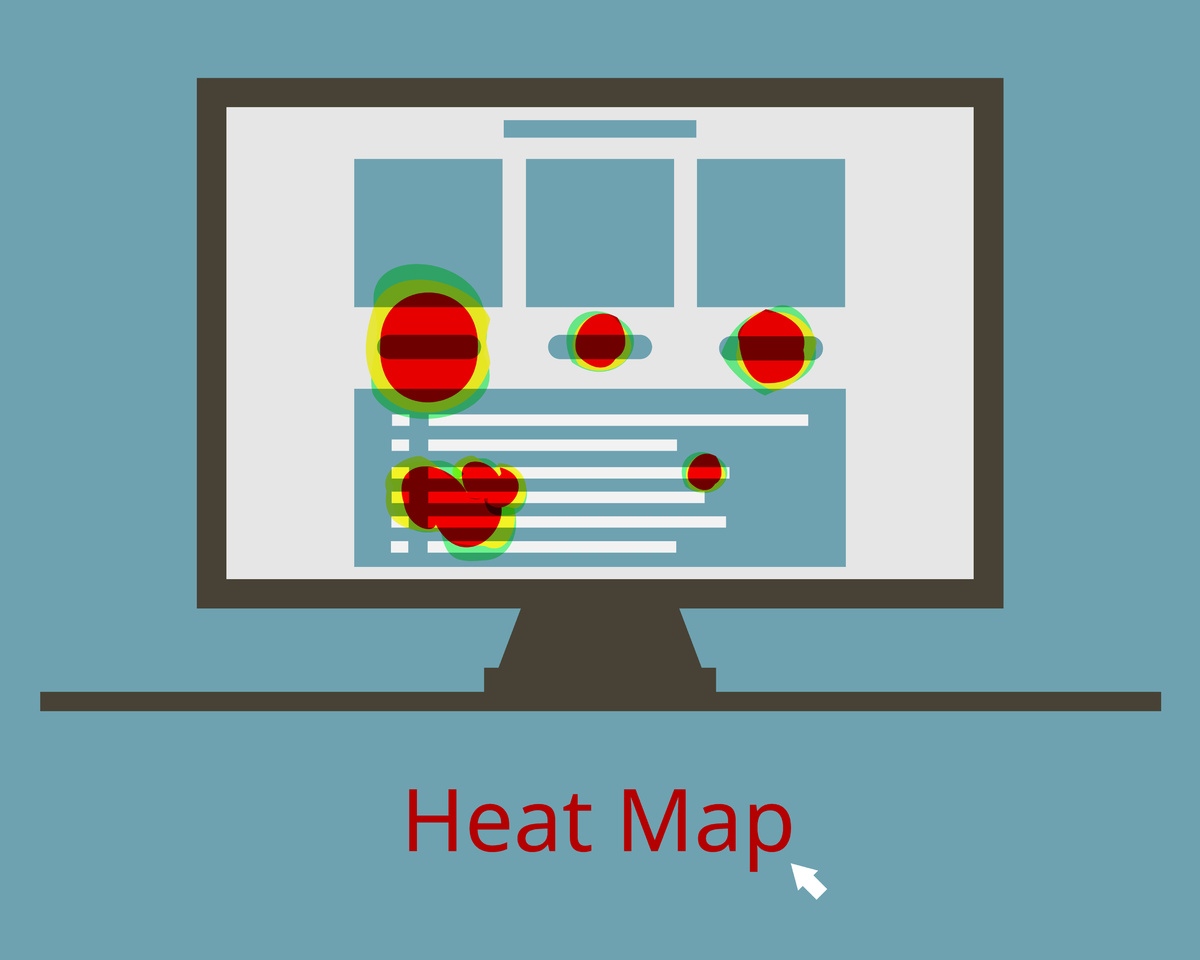
Conversion rate optimization can be one of the most challenging tasks in digital marketing. One of the reasons for this is that there is no magic formula that works for every audience and every page. And it’s also incredibly difficult to track how visitors are interacting on your web page. But one tool you can use to improve the customer experience and your results is a heatmap.
What Is a Heatmap?
A heatmap is a visual representation of the activity on your website. It is a data visualization tool that shows the areas that get the most (and least) attention from visitors. You can use the information you get from a heatmap to make more informed decisions about your digital marketing strategy.
How Heatmaps Work
Heatmaps work by using code placed on the backend of your website. This is generally done through a plugin or app and involves little coding.
When you use a heatmap, you see colors that represent “hot” and “cold” activity. Red and orange mean that people are hovering over that section of your page and giving it some attention. These are “hot” colors. “Cool” colors like blue and green mean that these areas of your web page aren’t getting as much attention.
Most heatmaps will show you the “hotspots” where visitors click on content or hover the icon to view something. Scroll maps are similar, but they show at what point users stopped scrolling your page before leaving.

7 Ways to Use Heatmaps to Improve Your Digital Marketing Efforts
These data visualization tools can be invaluable as solutions to determine how well a specific page on your website is performing. In addition to studying figures in your analytics dashboard, you can use a heatmap to improve your efforts. Here are several ways you leverage these tools:
1. Learn More About Your Visitor’s Intent
This visual tool provides businesses with a unique opportunity to learn more about their target audience's behavior. One of the key features of heatmaps is the ability to figure out what parts of your page get the most attention.
What content do visitors care about the most, and what do they decide to pass by without a glance? At what point have visitors had enough and decide to leave? You can use this tool on your home page, blog posts, and sales landing pages to improve your overall strategy.
2. Optimize Your Page Layout
In some cases, your content might be on point, but the way you present it is missing the mark. If you aren’t using enough SEO elements like header tags, images, and white space, you may not be delivering an optimal user experience.
You can use heatmaps to test out different versions of a webpage to see what layout works best. Discover where friction points, like CTA buttons or certain images, exist so that you can address them and improve results.
3. Dig Deeper Into Your Website Metrics
Analytics give you a ton of data about your page’s performance. But they might not answer the most important question. “Why are visitors doing what they do?”
For example, you might have a cart abandonment issue but can’t figure out why. Using a heatmap, you get a visual depiction of the actions people take before they decide to hit the road. This can help you discover the “why” behind the numbers so that you can take action to turn things around.
4. Determine the Optimal Length for Content
Even though Google says that your content’s length doesn’t correlate with quality, it’s important to deliver the information that visitors want and need. That does factor into your search engine rankings.
You can use heatmaps to find out what your audience thinks about your content length. Specifically, a scroll map will tell you where visitors have decided they’ve seen enough and decide to leave. You’ll also want to determine if they went to another page on your site and if there is a problem with your content aside from its length.
5. Structure Your Website for the Buyer
Ideally, your website should be designed with the buyer’s journey in mind. This means that your content, links, and CTAs offer prospects the information they want and expect at each stage of their journey.
Heatmaps and clickmaps can tell you what content the user is focusing on as well as which links they choose to click. If the clicks take them outside the sales funnel, you could lose the conversion.
6. Combine Heatmaps With On-Page Surveys
Heatmaps help you identify design issues, friction points, and other opportunities that your audience may not be able to articulate in a review or survey. When you collect data from multiple sources, you can assemble a more comprehensive picture of your visitor’s relationship with your content.
Try using surveys on your website to ask visitors about their experience and find out what they’d like to see added or changed. Supplement this with heatmaps to identify any design issues on specific pages.
7. Identify Any Items That Create Friction
If you’ve ever visited a confusing and tough-to-navigate website, you understand the struggle many consumers face. Hopefully, your customers are dealing with this, but heatmaps can tell you for sure.
This tool can show you where visitors are hitting trouble spots, such as places they expect to find links but don’t. Likewise, if a customer hovers in one place for a long time, it might mean that your content is confusing and needs clarification.
Looking for Results-Driven Digital Marketing Solutions?
Heatmaps are useful tools for improving the customer experience and your overall results. But they won’t solve every digital marketing challenge, and they are just one tool out of many you can leverage.
At Connection Model, we specialize in helping clients uncover and realize their potential. Our team will assess your online profile and recommend the digital marketing solutions that will get you the best results. Contact us today to learn more about our services.
Written By: David Carpenter


